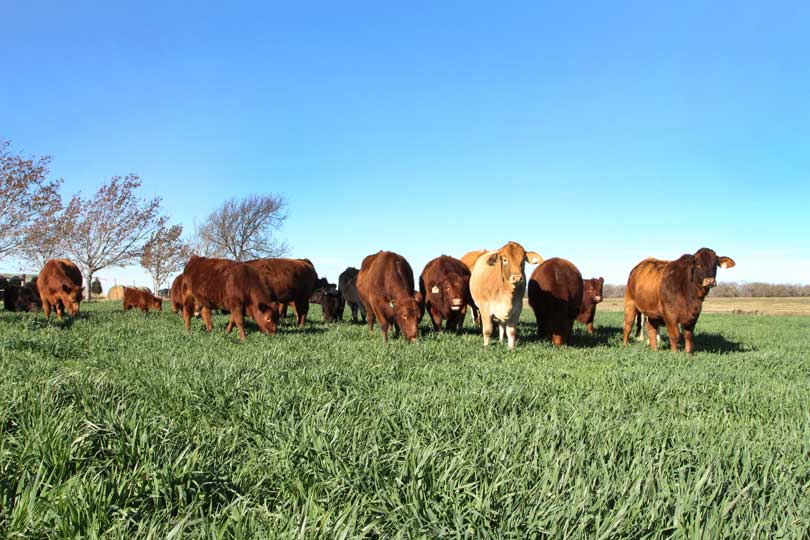By Jessica Domel
Multimedia Reporter
A single case of trichomoniasis can have significant impacts on a cow-calf herd, but there’s good news. It’s preventable.
“In my time as a veterinarian, I have never seen a disease that brings economic devastation to a cow-calf producer like trichomoniasis,” Dr. John Davidson, senior associate director of Beef Professional Veterinary Services at Boehringer Ingelheim (BI), said in an interview with the Texas Farm Bureau Radio Network.
Unfortunately, it can be hard to understand the real economic impact trichomoniasis can have until it is experienced, Davidson added.
“Bovine Trichomoniasis is a sexually transmitted disease caused by the protozoan Tritrichomonas foetus. It’s a parasite that’s found in the reproductive tract of cattle, the cows and the milk, so it will be found in the epithelial folds of the penis and the prepuce in the bull,” Dr. Lewis “Bud” Dinges, beef cattle professional services veterinary for BI, said.
If a non-infected bull breeds with a cow that is infected, he will ultimately become permanently infected, according to Dinges.
“Cows can have the organism, and they can clear the infection after two to four months, but the bulls will maintain the infection and continue to spread the infection in the herd when they breed other non-infected cows,” Dinges said.
If an infected cow carries and maintains a calf, she may spread the organism to the calf.
Cows may clear the infection after two to four months and then have a period of infertility before becoming pregnant again.
“In the cows, you’ll see early embryonic loss or abortions. You might see pyometra, which is a uterine infection,” Dinges said. “You’ll see cows that will clear the infection if there’s a long breeding season. They’ll become pregnant, and they’ll be late calving.”
Bulls show no clinical signs of infection, so it is important to surveil the herd to help eliminate the disease.
Dinges recommends individual identification for cows and keeping accurate records of when bulls are turned out with cows and when they are taken off the cows.
It’s also important to practice good biosecurity, he said.
“I recommend herd surveillance, testing the bulls prior to breeding season and then testing bulls after they’ve come off the cows,” Dinges said. “Also, there’s a trich vaccine, which can be implemented in the trich control or trich prevention plan, that is labeled to reduce the shedding of the organism in the cow.”
The TrichGuard vaccine is labeled for healthy bulls and cows. It needs to be given in two initial doses, with the second dose two to four weeks after the first.
“The last to second dose needs to be given four weeks prior to the beginning of breeding season,” Dinges said. “There are people, producers, that use it in their bull battery. I recommend moving the two initial doses, followed by a second dose being given four weeks prior to breeding season, and then given an annual booster dose to both the cows and the bulls.”
If livestock owners do not surveil the herd and vaccinate, trich can spread throughout the herd and have heavy financial ramifications.
“If you do detect the disease in the herd, you’ve got the cost of gathering the cattle to test them, the testing, culling your positive animals and open cows, and then replacement of cattle and bulls to replace the animals that you had to cull due to the disease,” Dinges said. “It can be really economically devastating all around.”

